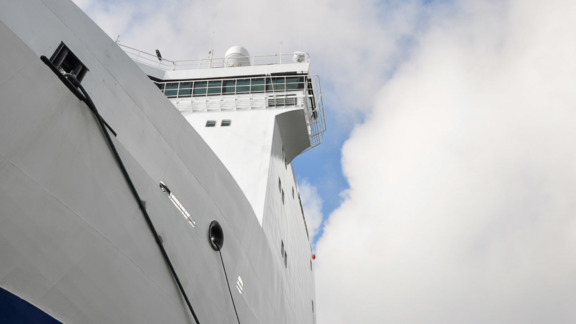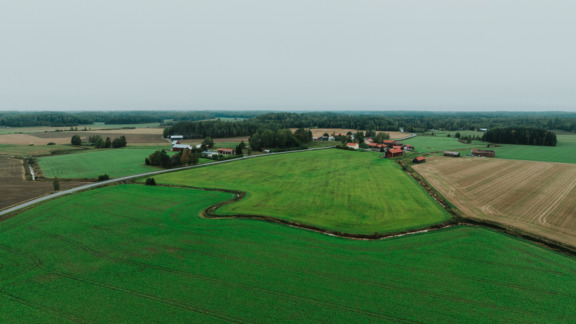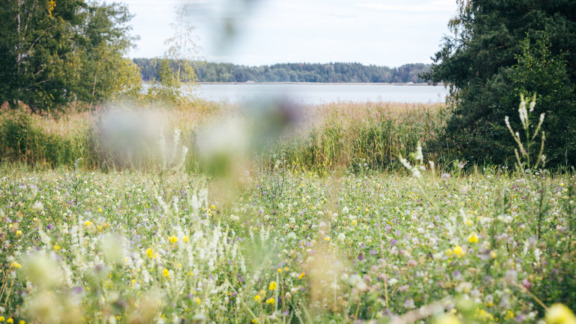The Bank of Åland’s Baltic Sea Project to finance BSAG:s work for marine biodiversity
The loss of biodiversity is accelerating, and we need to take urgent and concrete action to stop species extinction. The biodiversity of the sensitive and unique ecosystem of the Baltic Sea is under threat, too. Baltic Sea Action Group (BSAG) is starting a collaborative project which utilises the extensive data from the Finnish Inventory Programme for the Underwater Marine Environment VELMU to build concrete measures to protect underwater environments. The creation of a protection plan for the pilot area of Gullkrona island in the archipelago of Southwestern Finland will begin with dives this autumn.
The project strengthens the collaboration with VELMU and the inventory project of the marine environments of Åland islands. In addition to BSAG, key collaborators include the Baltic Sea researchers professor Alf Norkko (University of Helsinki, Tvärminne zoological station), research professor and VELMU programme coordinator Markku Viitasalo (Finnish Environment Institute SYKE), special researcher Sonja Salovius-Laurén, project researcher Henna Rinne, and assistant professor Christoffer Boström (Åbo Akademi).
The Bank of Åland’s Baltic Sea Project is the strategic partner and financer of the project. The Bank of Åland funds the project with 80 000 € during its first year and the aim is to build long-term collaboration.
“The loss of biodiversity is a threat to the planet and humankind, comparable to climate change. These problems also relate to the Baltic Sea. The Bank of Åland’s Baltic Sea Project has for a long time supported projects that improve the state of the sea and we view this collaboration with BSAG as a unique opportunity to affect the state of the marine environment and advance the well-being of the Baltic Sea”, says Anne-Maria Salonius, Director for business area Finland at the Bank of Åland.
”We want to advance the protection of key species and habitats”, says Laura Höijer, Content Director at BSAG. “The aim is to increase awareness of the role of marine biodiversity and demonstrate how private entities can participate in the protection of marine environments.”
The targeting of protection measures requires information on where key areas are located. In Finland, the circumstances for building effective protection programmes are good since necessary data and knowledge on crucial underwater marine environments have been produced and mapped over the past 15 years in the VELMU programme.
”About a tenth of the Finnish sea areas are protected but based on the VELMU data we know that almost three quarters of important marine environments are outside of the currently protected areas. However, a one percent increase in protected areas would protect many ecological key species and habitats and double the effect of the protection, if the measures are well planned and precisely targeted”, says research professor Markku Viitasalo.
The underwater biodiversity of the Baltic Sea is supported by species such as bladder wrack, eelgrass and mussels. These species maintain the functions of the ecosystem by providing habitats, nutrition and refuge for several other life forms. However, eutrophication has weakened these crucial species and climate change has become another major stressor as it changes the sea, making it an unfavourable living environment for them.
To protect the biodiversity of the sea both eutrophication and climate change must be addressed, but in addition its important to protect the habitats of the key species from the pressure that human activity imposes on them.
”The majority of the most valuable areas are located in shallow waters, near isle shores. These are often areas owned by private entities. Our challenge is to help the owners – private entities, municipalities and businesses – see the value in conservation and convince them to take action. One of the aims of the project is to demonstrate how the protection can be carried out and what follows from it”, says BSAG:s Laura Höijer. “The benefits to nature are obvious but private owners also need to know what sort of restrictions conservation may entail.”
The recently opened Gullkrona island, which is popular among boaters, is the pilot area for the project. According to the VELMU data gathered so far, the surroundings of the island are rich habitats and the variety of species will be further investigated during the early autumn 2019. Following the investigation, the aim is to collaboratively build conservation measures, the implementation of which is decided on by the local fishing co-op. Moving forward, the protected areas will remain under observation. The evaluation is planned with VELMU and it is carried out by Metsähallitus.
The opportunities that private conservation entails are demonstrated not only on Gullkrona island but also through utilising the research and art activities of Korpoström Archipelago Centre and BSAG: s other communication activities.
” Broad-based cooperation enables long-term protection that affects the Baltic Sea in many ways and spans long into the future”, Höijer summarizes.



